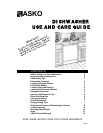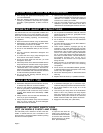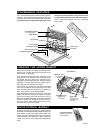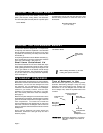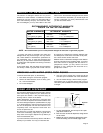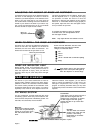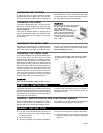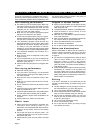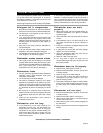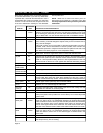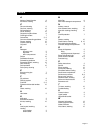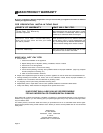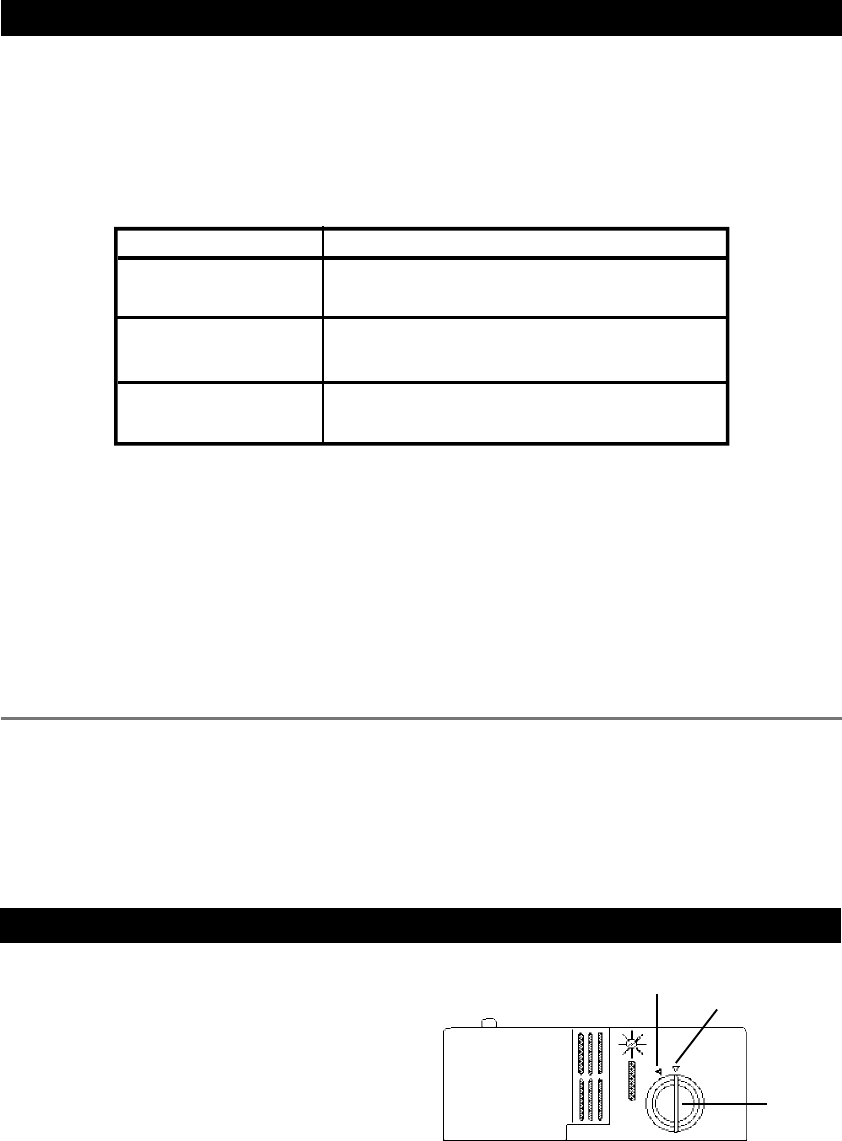
Page 5
To remove hard water spots, try the following:
1. Run dishes through a normal wash program.
2. Remove all metal dishware, such as cutlery, pans,
etc., from the dishwasher.
3. Do not add detergent.
The rinse aid is released during the final rinse to prevent
water from forming droplets on your dishes that can
leave spots and streaks. It also improves drying by
allowing water to “sheet” off the dishes.
ASKO dishwashers are designed to use liquid rinse
aids. The rinse aid dispenser is located inside the door
next to the detergent dispenser. (See illustration on page
4.) To fill the dispenser, open the cap and pour the rinse
aid into the dispenser until the level indicator turns
completely black. The dispenser holds about four
ounces of liquid rinse aid.
Be careful not to overfill the dispenser, because this
could cause oversudsing. Wipe away any spills with a
damp cloth. Don’t forget to replace the cap before you
close the dishwasher door.
If you have soft water, rinse aid may cause a white film to
develop on your dishes. You may not need rinse aid.
* 12 grains and higher is extremely hard water and
detergent alone may not be enough. You may need to
use a water softener to maximize the performance of
your dishwasher. Also, in areas with extremely hard
water (9+) you may need to wash at lower temperatures
to prevent hard water deposits from forming in tank and
wash system.
In hard water areas, both the dishes and the machine
can develop a white or gray film after a while. This can
The amount of detergent needed can vary due to
differences in water hardness. To determine the water
hardness in your area, contact your local water utility or
area water softening company. The harder the water,
the more detergent you may need. Refer to the chart
RECOMMENDED DETERGENT AMOUNTSRECOMMENDED DETERGENT AMOUNTS
BASED ON WATER HARDNESSBASED ON WATER HARDNESS
NOTE
:
We recommend that you do not add prewash detergent for the Quick or Light wash programs.
AMOUNT OF DETERGENT TO USEAMOUNT OF DETERGENT TO USE
be removed by replacing the prewash detergent with
two tablespoons of citric acid. If the water is very hard,
use a rinse aid that contains citric acid.
Different brands of dishwasher detergent have different
amounts of phosphorous for softening water. If you have
hard water and use a detergent with less than 8.7%
phosphorous content, you may need to use more
detergent or use a detergent with more than 8.7%
phosphorous content.
REMOREMOVING HARD VING HARD WAWATER SPOTER SPOTS FRTS FROM DISHESOM DISHES
4. Pour two cups of vinegar into a bowl and set the
bowl face up on the bottom rack of the dishwasher.
5. Run the dishes through a Normal wash program.
If this doesn’t work, try the same process with 1/4 cup of
citric acid crystals (available at most drug stores) instead
of vinegar.
RINSE AID DISPENSERRINSE AID DISPENSER
1 teaspoon
1 to 1-1/2 tablespoons
1 teaspoon
1 to 2 tablespoons
1 teaspoons
2 to 3 tablespoons
Soft
(0-3 grains per gallon)
Medium
(4-8 grains per gallon)
Hard
(9+ grains*)
Prewash
Main wash
Prewash
Main wash
Prewash
Main wash
DETERGENT AMOUNTSDETERGENT AMOUNTS
WATER HARDNESSWATER HARDNESS
Replace the cap by inserting it aligned with “open”
arrow and turning it to the closed (right) arrow.
3.
Pour the rinse aid into the dispenser, being careful
not to overfill.
2.
To open the dispenser, turn the cap to the “open”
(left) arrow and lift it out.
1.
Open
Closed
Dispenser
Cap
below for the recommended detergent amounts based
on water hardness. Remember, you should adjust the
amount of detergent you use by small amounts until
you find the correct amount.



